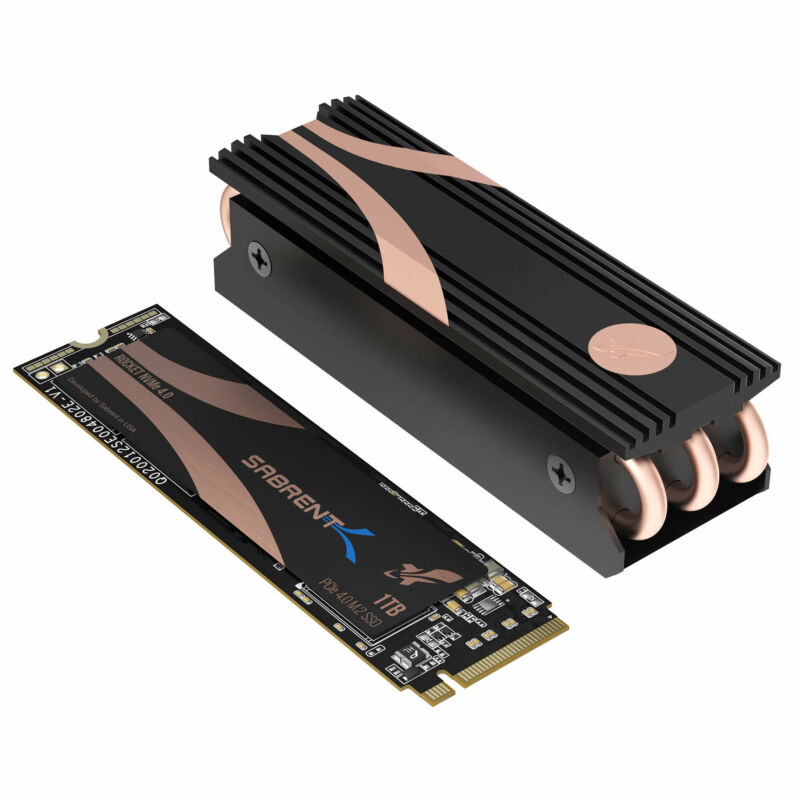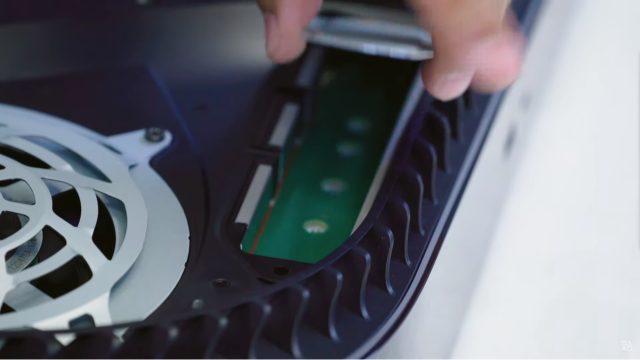
/ This style of PCIe 4.0 M.2 SSD should soon work with the PS5, though that massive heatsink won’t fit inside the system’s expansion bay.
Bloomberg cites unnamed “people briefed on the matter” in reporting that PS5 owners will finally be able to expand the system’s built-in storage by this coming summer. The planned firmware update that will unlock this feature will also allow for higher cooling-fan speeds on the system to prevent overheating, Bloomberg reports.
For games designed for the PS5, owners are currently limited to 667GB of usable space on the system’s 825GB high-speed NVMe drive. That’s a pretty strict limit when individual PS5 games can be 50 to 100GB or more at the high end. PS5 owners can plug in a standard USB hard drive to store backward-compatible PlayStation 4 games running on the system, though.
Almost a year ago, Sony
announced that the PS5’s storage space would be expandable with certain
standard M.2 solid state drives, which are shaped a bit like a stick of gum. Sony said it would be benchmarking a number of those drives to ensure compatibility with the PS5’s stated 5.5GBps data transfer spec. But Sony’s Mark Cerny said at the time that the announcement of these officially confirmed PS5-compatible drives would “likely be a bit past” the PS5’s launch.
For its Xbox Series X/S line, Microsoft has gone in a different direction,
using a proprietary expansion card format to allow for additional high-speed storage. The only currently available option for that expansion card, a 1TB offering made by Seagate,
retails for a whopping $220.
What kind of drive will I need?
M.2 drives that support the PCIe 4.0 standard, which should meet Sony’s stated minimum specifications for data bandwidth, currently retail for as low as $150 for 1TB. That open-market price will likely continue to come down as competition and technology advance over the years. But Microsoft’s storage expansion solution is available now, while PS5 owners are currently stuck waiting for theirs to be activated via firmware update.

While Sony says it will be benchmarking drives that it can certify as PS5-compatible, other standard PCIe 4.0 drives will likely work with the PS5 after the coming firmware update. It seems unlikely that Sony will allow cheaper, slower PCIe 3.0 drives to work with the PS5, though.
“No PCIe 3.0 drive can hit the required spec,” Cerny said when discussing storage expansion options last March.
PS5-compatible M.2 drives will also be limited by the size of the PS5’s expansion bay (accessible from
underneath the system’s removable faceplate). Many such drives that
come with their own heatsinks or fans won’t physically fit in the PlayStation 5. The system’s own cooling solutions will be key to ensuring that the heatsink-free drives can operate without failing.
The whole thing promises to be a little more complicated than the plug-and-play simplicity of external USB drives or even internal hard drive replacements on some recent consoles. But that’s the price you pay for ensuring developers have access to a data-loading standard that can stream data to RAM at next-generation speeds.



